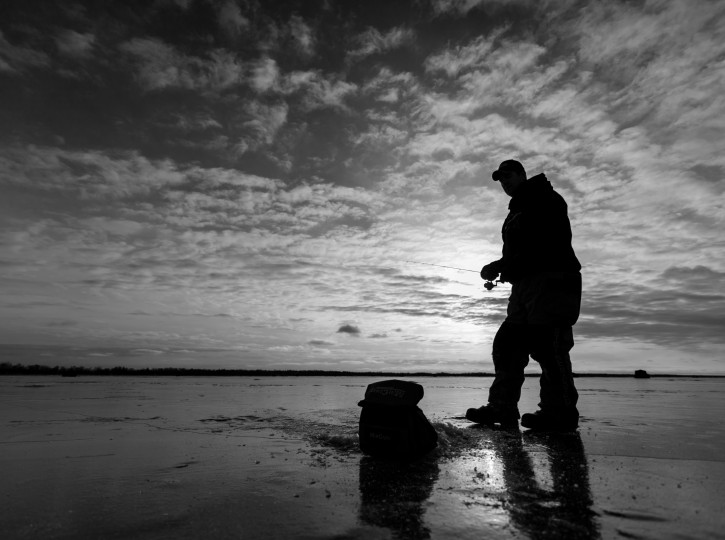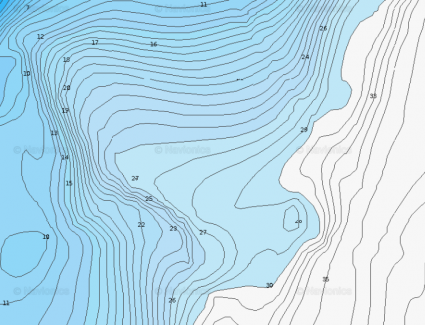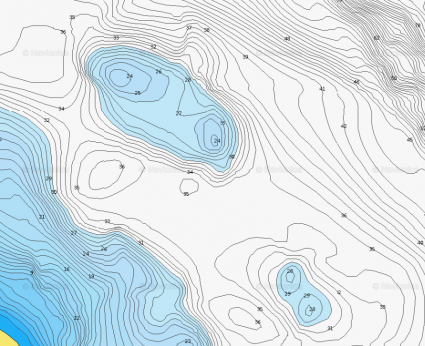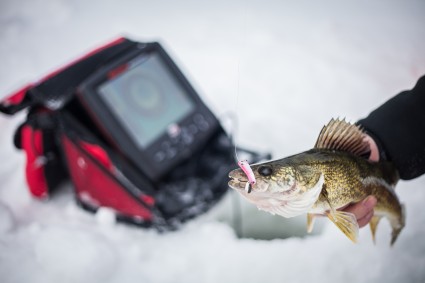Too many anglers believe fishing Walleyes in the Metro is a completely fruitless endeavor. Can it be tough? You betcha! Is it well worth it. Better believe it! Many of the lakes in the Twin Cities Metro Area and its suburbs contain a tremendous amount of Walleyes yet it seems like to many, it’s an enigma. The main problem which arises for me is the amount of pressure on these lakes. Many of these lakes are no secret and as soon as truck travel becomes an option, the bite gets down right tough! I grew up fishing the West Metro area, and often times it sounded like Crosstown during rush hour outside my fish house! There are a few ways I’ve found to beat the pressure during the month of December!
Timing is a huge aspect with finding a solid metro eye bite. The sooner you can safely get out on the ice, the better! I don’t advocate this kind of activity, but I have a buddy who is a great walleye fisherman, and lights up metro walleyes every single year. He also has a track record of dumping a wheel house, or an ATV year after year. First ice, you swear he is fishing on Lake of the Woods, as he ices limits of walleyes and many trophy fish right in his backyard. You get the picture, don’t be stupid about it, but try to get out on the ice before the masses arrive.
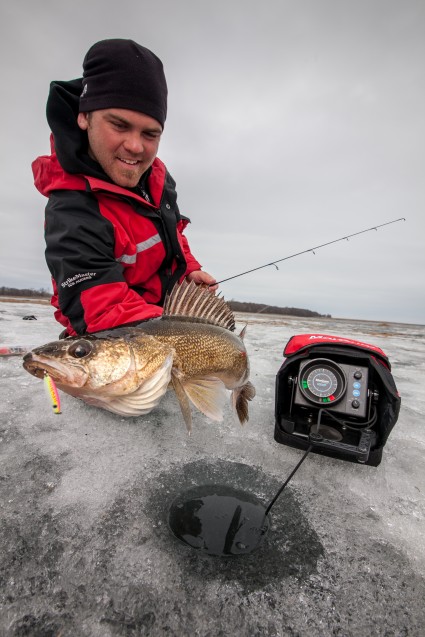 After a foot or two of ice forms, the game changes a little bit. Pressure starts to mount and tactics change, does this mean the fishing is over…not at all. I’ll discuss the two tiered timeline (First ice & Truck Travel) in each of the next sections.
After a foot or two of ice forms, the game changes a little bit. Pressure starts to mount and tactics change, does this mean the fishing is over…not at all. I’ll discuss the two tiered timeline (First ice & Truck Travel) in each of the next sections.
Location is a big section to breakdown, and it is the difference between a pail full of fish, and a make shift toilet. First off, community holes are the bomb! They are good for a reason, people catch fish on them! Now in saying that, this is where the two tiered timeline comes into play. If you can be the one of the first handful of people out on these spots, you’ll often have an excellent outing. Two weeks later, stay away from them like the plague!
A common misconception is that structure is created differently on metro lake vs. a walleye factory lake up north. Not the case at all. Points, Transitions in bottom substrate, inside turns, rock piles and weed lines are going to be your bread and butter. Good walleye structure is good walleye structure, and it doesn’t matter if it’s on a premier walleye lake, or on a lake where you can see the Minneapolis skyline.
Most metro lakes are blessed with excellent weed growth, and it’s no secret fish relate to them. Travis Frank, a Metro Walleye expert, had a great explanation as to why he found so much success fishing weeds. He would always say, most of the walleyes in the metro lakes are stocked, and these fish grew up in small ponds where their only cover was weeds. It’s what they know and it’s where they hang out. Weedline structure like points and inside turns are two areas you can rely on for good fishing all year long. Early in the season I look for weedlines which run in the 12-16 foot range, connected to shoreline structure, or near it. Access to deep water can also be beneficial but it’s not necessarily always the answer when locating a good weed spot. Steep drops are another great option for metro success and I’ve found there is a little trick to finding fish. The steepest deepest drop is a good spot but where the sharp break tapers into a flat is where some of my best action has gone down.
As the winter progresses I’ll alter my locations based off of pressure and fish movement. The first spots I’ll check out is large mid-lake reef complexes. These often will boast a lot of traffic, but finding a spot on the spot is your goal. This is where an underwater camera is worth it’s weight in gold! You don’t want to be fishing just the inside turn, you need to drop that camera down and see exactly where you want to set up camp. That means, getting directly on the weedline, or finding an area of the turn that contains a different bottom substrate. Mere yards can make a huge difference! Again good walleye structure, is good walleye structure, no matter where you are!
A second dynamite spot is rock humps. With the recent advancement in mapping technology, it’s easier than ever to find these small rock humps, which before were only known by a small handful. Searching the Navionics Web App, is an simple and effective way to find them on your computer, and it definitely helps to make the work day go faster! You’ll want to look for humps that top out anywhere from 14-25 feet of water, with some of the best ones topping out around 18 feet. Often times these spots are only large enough for a couple houses, so getting away from people won’t be a problem. The next step is to put boots on the ice, and drop the underwater camera. If you see boulders, you’re in the money, but if you find a sand/gravel/rock mix, you’re golden!
Growing up, I worked at a small bait shop in the West Metro, and I would have a customer come in at 8 am with walleyes in his eyes, in need a pail full of shiners. It was sometimes hard bursting their bubble, but you’re better off heading to the local bar than fishing walleyes mid-day. I have found them to be creatures of the night, especially with the trend of increasing water clarities. This is a good for some and bad for others. If you have a wheelhouse, it could soon become your best friend, as staying out all night is the best option for getting on large eyes. Jigging will also produce, especially around sunset and sunrise. So it’s time to embrace your inner vampire and hone in on the night bite on metro waters.
The tactics and techniques aren’t much different than when fishing in the rest of the state. Jigging spoons such as VMC’s 1/8 oz Tumbler and Tingler spoon tipped with a fathead is a staple for low light jigging. The larger eyes often will come on set lines, such as tip ups, dead sticks, or rattle wheels. In my opinion rattle wheels are god’s gift for the hard house fisherman, and they produce a lot of big fish! A simple #2 or #4 Octopus hook with a couple split shots, and a 3-5 inch shiner hooked through the back is all you need. Set them one to two feet off the bottom, and then keep track of which lines are producing fish. Often times an inch difference in shiner, or a foot vs. two feet off the bottom makes a world of difference.
Many of these lakes are under the noses of thousands of fisherman who wait for the weekend to head up north to scratch the itch, while you could be getting into trophy caliber fish every night. Remember, walleyes are walleyes and with these simple tips, fishing the metro lakes should be a little easier. Don’t be afraid to get off the beaten path, and get on a bite of a lifetime!
